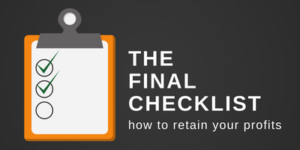Even at its best, owning a business offers a host of challenges. One of the latest: how to get and keep good employees.
Particularly in the construction trades, a common attitude was that if someone quit, there’d be another body waiting to be hired. However, with an increasing emphasis on post-high school education and close to a full-employment economy, that isn’t always the case.
Some companies are finding it’s taking more than just a regular paycheck to keep their people on the payroll. A popular extra benefit: a retirement package with some sort of employer match.
An important message
At some point, just about everyone realizes that Social Security isn’t enough to cover a comfortable retirement, especially as people live longer. Saving for that big life step seems reasonable, but for those living paycheck-to-paycheck it isn’t easy.
One option: 401(k) tax-qualified deferred-contribution savings accounts.
The accounts, which take their name from the subsection of the Internal Revenue Code which authorizes them, allows employees to defer up to 3 percent of their paychecks into such a plan, which may or may not be matched by employers.
Obviously, having employers match the deferred amount provides one benefit, but even without the match, the funds are excluded from the employee’s taxable income until the money is withdrawn years or even decades down the road.
The 401(k) is certainly not a new money-management device. Federal legislation that allows the program initially passed in 1978 and was further refined in 1981. Some companies in the concrete industry have programs that date back almost that far.
Adam Solomon, president of Springfield, Illinois-based Solomon Colors, is the fourth generation of his family to head the eponymously named company. He says it began offering a 401(k) program in the mid-1980s.
His dad and his grandfather decided it was a good thing to do for the employees, he says. Back then, there were probably 15 to 20 employees, compared to today’s 170 or so.
Sally Reid, administrative controller of Mattingly Concrete in Indianapolis, says her employer began its 401(k) program in early 2017, after Will Mattingly purchased the company from his father, Dan.
The reason behind the program at the approximately 50-employee company is much the same.
“First, it gave us a chance to show how much we appreciate our employees and to help them look to their futures,” Reid says. “It’s important for us to offer them a way to save for their futures, but it also makes us more competitive in our ability to hire.”
For some companies, there may also be another reason to set up a 401(k) program. If they have unionized employees, those workers are already covered by pensions through their unions. That’s the case with both Bay Area Concretes Inc. in Livermore, California, and Concrete Arts in Hudson, Wisconsin.
“BAC employees have two options for a retirement program,” explains Mike Price, president and CEO. “Union employees earn a pension based on the hours they work. This is funded by BAC through monthly contributions to the union trust fund. Non-union employees can participate in the Bay Area Concretes 401(k) plan.”
No single best answer
For Concrete Arts, and particularly its sister company, Surface Art and Prep, which focuses on grinding and polishing larger commercial jobs, the process is a bit challenging, says Mike Dougherty, vice president of sales.
Dougherty says the companies are obligated to pay into a pension fund for every hour their guys work union jobs. But for employees to reap the benefits of this time counting toward a union pension, they must work 1,000 hours a year on union jobs.
“We only have two guys that meet that criterion, so we ultimately lose the pension dollars on any union work done by our other employees who don’t meet that threshold,” he says.
They chalk this up as part of the cost of doing business and also contribute to the employees’ 401(k)s. It helps that Concrete Arts switched over from the simple individual retirement accounts (IRAs) that company founder Tom Graf offered for years.
“It’s also tied into profit-sharing,” Dougherty says. “At the end of the year, we have a certain fund we pull from with our profits and put it directly into their 401(k)s as opposed to giving them a cash bonus.”
While the profit-sharing is an additional option Concrete Arts offers, Solomon Colors takes a slightly different approach. Although the company is family owned, it also offers an employee stock ownership plan (ESOP). At Solomon Colors, employees own 51 percent of its stock.
“Again, it’s something my grandfather went to a seminar for and we began the program in 1996,” says Adam Solomon. “He thought it would be great to get the employees feeling they’re part of the company and, if we do well, they benefit for their retirement.”
As with a 401(k), an ESOP provides certain tax benefits to both the company and the shareholders, primarily related to taxes. Perhaps it’s not surprising that the average Solomon Colors employee has been with the company 15 years. Recently, one of its chemists was honored with a 40-year plaque.
With any of these programs, self-education is certainly one place to begin. Probably the best news about 401(k)s is, “There are third-party vendors that specialize in handling this type of benefit,” says BAC’s Price.
He adds that the third-party administrator covers all the requirements of offering a plan.
“And, the cost is minimal compared to the fines and penalties that can be levied by various regulatory agencies,” Price says.
In the case of Concrete Arts, Dougherty says the company’s CPA recommended a 401(k) plan.
For Mattingly, “It was a cold call,” Reid says. “They came to us. It was very good timing on their part.”
As the controller at Mattingly, Reid oversees the program’s in-house administration, which she says isn’t onerous at all.
“Setting it up as each employee becomes eligible is a matter of entering their information into the system,” she says. “It’s very easy to administer. I just withhold from the employees’ checks and make the payments weekly. It probably adds about five minutes to each payroll run, but the payments are all done online.”
Education is a must
That’s not to say the entire process is a breeze. Concrete Arts’ Dougherty says one important service its third-party vendor offers is education on the 401(k) process.
“Fortunately, we have an investment guy who is very down-to-earth and speaks the same blue-collar-ese that our guys do,” Dougherty says, making them feel comfortable to ask questions so they can better understand the benefit.
Solomon agrees that education is an important part of the process.
“We have a book we give everybody,” he says. “We also have a meeting every year on the state of the company where we explain the 401(k) and the ESOP and how they work. People who’ve been with the company a long time can probably recite a lot of it.”
An important requirement with 401(k) programs is that all employees are treated equally, whether it’s when they can enroll or how much of a match the company provides. Even so, not all employees opt to participate, although most do.
Dougherty says only one of Concrete Arts’ 25 employees isn’t enrolled in its 401(k) plan, and both Solomon and Mattingly’s Reid say participation in their plans is at least 90 percent.
Solomon speculates that those who don’t sign up for the program aren’t really committed to the company for the long-term. Reid says others, particularly younger workers, may have already started their own IRAs.
These companies don’t feel that their 401(k) plans, or even the profit-sharing or ESOP, are enough to get and keep employees in today’s job market. That’s why, for instance, BAC offers employees a wellness program, and Mattingly is looking to add health insurance to its benefits.
Both Concrete Arts and Solomon Colors are saying it with money. Concrete Arts pays bonuses to existing employees who refer their friends to the company, and to new hires after 60 and 120 days. And, Adam Solomon acknowledges his company is looking at increasing wages.
“We might have to up people’s salaries to entice them to stay with us or consider us as an employer,” he says. “A lot of people say they can make the same amount in a much cleaner environment.”
As for their 401(k) programs, the company reps interviewed say they’re pleased with them and recommend them to other industry employers.
“It gives stability to employees when they have something to look forward to,” says Mattingly’s Reid. “They’re not just working for today.”
BAC’s Price is even more to the point. Asked if he’d recommend 401(k)s to others, he says one word: “Absolutely.
www.bayareaconcretes.com
www.concretearts.com
www.mattinglyconcrete.com
www.solomoncolors.com

















